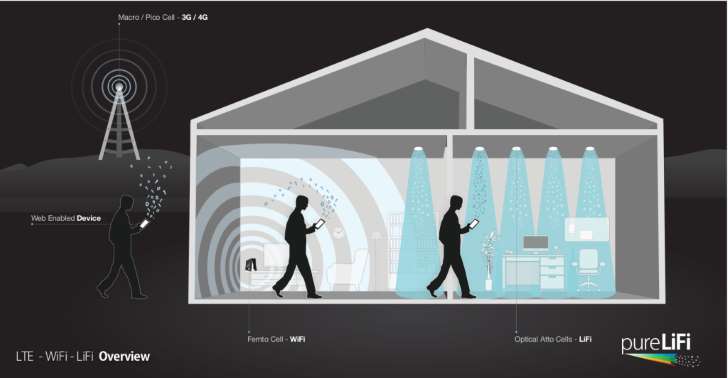
Long restricted to the academic domain, Li-Fi, a light-based data delivery method is suddenly getting all sorts of attention. An Estonian startup Velmenni recently tested an commercial implementation and found it to be superior to Wi-Fi in almost every way – except as something you and I will probably ever use.
Velmenni’s technology, called Jungru, uses an LED bulb and transmits data at gigabit speed. It has a theoretical speed of 224 gigabytes per second, the BBC reported. While the Jungru product is commercially viable, it is still based on what seems to be a laboratory-grade MATLAB and Simulink setup paired with photodiodes as opposed to a final product which must transmit data in real world environments full of light pollution and other variables.
University of Edinburgh Professor Harald Hass first demonstrated Li-Fi as a part of the D-light project at the school’s Institute for Digital Communications back in 2010. Has gave a 2012 TED Global talk about it but but despite several companies being interested enough to start a Li-Fi consortium, the technology is still not a commercial contender.
The technology uses protocols similar to the RF-band 802.11 protocols, with additional standards to eliminate the impacts of interference and impacts of ambient lighting. Despite this, however, the technology cannot be deployed in outdoors in sunlight or in other odd conditions.
While Li-Fi does come with the advantage of not interfering with radio signals, a lot of the benefits are overpowered by the simple fact that visible light cannot travel through walls, an essential factor which gives old-school Wi-Fi a huge advantage. This line-of-sight limitation does make the system more secure and gives better control over emissions, but it’s unclear what the minimum distance for signal reception would be if clear line-of-sight is achieved. With that in mind, it is easy to imagine the signal being intercepted by someone with a telephoto lens and an optical sensor tuned appropriately. While Li-Fi was touted as a possible channel for wireless communications on airplanes, widespread adoption of onboard Wi-Fi on most US airlines makes this use case less and less pertinent.
Source: Tech Crunch
Facebook Social Comments

